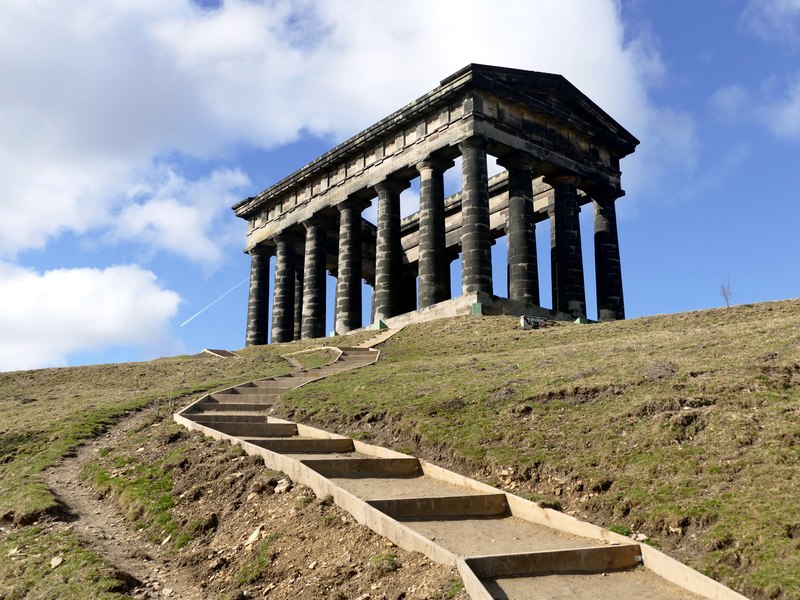Penshaw Monument, an iconic landmark standing proudly atop Penshaw Hill in Sunderland, England, is a testament to history, heritage, and the enduring spirit of the North East. This striking structure, with its resemblance to the ancient Greek temple of Hephaestus, has become an integral part of the region’s landscape, offering panoramic views and a sense of connection to the past.
Constructed in 1844, Penshaw Monument was designed by John and Benjamin Green to resemble the Temple of Hephaestus in Athens. The monument was built in honor of John George Lambton, the first Earl of Durham, often referred to as “Radical Jack.” Lord Durham was a significant political figure in the 19th century, known for his advocacy of parliamentary reform and support for workers’ rights.
The monument is a neoclassical structure, featuring 70-foot high Corinthian columns and a prominent frieze. The choice of architectural style reflects the fascination with classical antiquity that was prevalent during the Victorian era. The local limestone used in its construction gives the monument a distinctive appearance, especially when illuminated by the warm glow of the setting or rising sun.
Beyond its architectural significance, Penshaw Monument holds a place in local folklore. The site is associated with the legend of the Lambton Worm, a mythical serpent that, according to legend, terrorized the region. The story tells of John Lambton, the heir to Lambton Castle, who encountered the worm while fishing in the River Wear. After neglecting to slay the creature as advised by a local witch, the worm grew to monstrous proportions, wreaking havoc until Lambton returned to defeat it. This tale adds a layer of enchantment to Penshaw Hill, making it more than just a historical landmark.
One of the most captivating aspects of Penshaw Monument is the breathtaking view it offers from the summit of Penshaw Hill. Visitors who make the ascent are rewarded with panoramic vistas of the surrounding countryside, the River Wear, and the distant coastline. The landscape unfolds in a patchwork of green fields, quaint villages, and, on clear days, the expanse of the North Sea. The view alone makes the climb to Penshaw Monument a popular activity for locals and tourists alike.
Throughout the years, Penshaw Monument has stood as a symbol of civic pride and cultural identity for the people of Sunderland. The annual Penshaw Bowl, a popular event held on Easter Monday, sees locals rolling decorated eggs down the hill in a friendly competition. This tradition, along with the monument’s role as a backdrop for community gatherings and events, further cements its place in the hearts of the region’s residents.
In conclusion, Penshaw Monument is not just a structure; it is a living testament to the history, culture, and enduring spirit of Sunderland and the North East. Its neoclassical grandeur, historical significance, and panoramic views make it a cherished landmark that continues to draw visitors seeking a connection to the past and a stunning perspective on the present.



